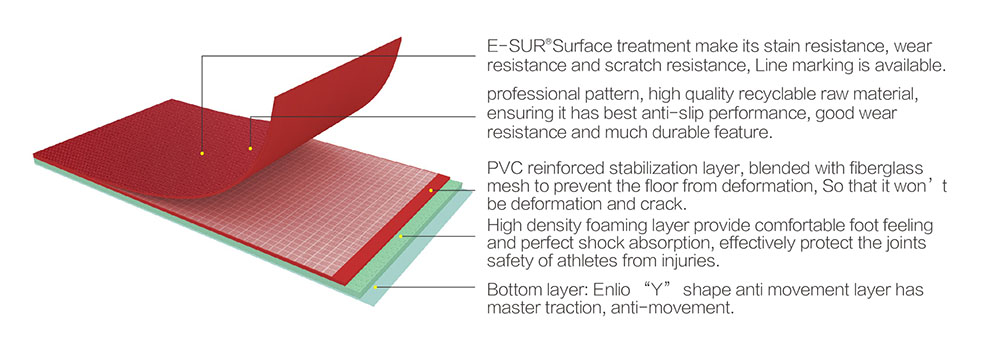Aug . 09, 2024 00:10 Back to list
Best Yoga Mats for Your Gym Workout Sessions to Enhance Performance and Comfort
The Importance of Choosing the Right Yoga Mat for Your Gym Workouts
When it comes to maintaining a healthy lifestyle, regular exercise plays a crucial role. For many enthusiasts, yoga is not just an exercise; it's a holistic approach to well-being. A key element that can enhance your yoga practice and gym workouts is a quality yoga mat. In this article, we will explore the significance of a yoga mat in gym settings, how to choose the right one, and some helpful tips for its maintenance.
Why a Yoga Mat?
A yoga mat serves several important purposes in gym workouts. First and foremost, it provides a non-slip surface that enhances stability while performing various exercises. Whether you’re practicing yoga poses, engaging in bodyweight exercises, or performing stretching routines, the right mat can significantly reduce the risk of injuries. A mat with good grip ensures that you won’t slip, allowing you to focus entirely on your form and technique.
Additionally, the cushioning provided by a yoga mat adds comfort during workouts. Many gym exercises involve movements that put pressure on your joints. A quality mat offers support and reduces strain, making your workouts more enjoyable and less painful. This is particularly important for yoga practices where poses require stability and balance.
Features to Consider
When selecting a yoga mat for gym use, there are several features to keep in mind
1. Thickness The thickness of a yoga mat can vary significantly, typically ranging from 1/16 inch to 1/4 inch thick. Thicker mats provide more cushioning and support but may make it slightly more challenging to balance during certain poses. Conversely, thinner mats offer more stability but less padding. Consider your personal comfort and the types of exercises you’ll be doing.
yoga mat for gym

2. Material Yoga mats are made from various materials, including PVC, TPE, and natural rubber. PVC mats are durable and easy to clean but may not be as eco-friendly. TPE mats offer a balance of comfort and environmental consciousness, while natural rubber mats are biodegradable and offer excellent grip but tend to be pricier.
3. Texture The surface texture of a mat is essential for preventing slips. Look for a mat with a textured surface that enhances traction, especially when you might be sweating during a workout.
4. Portability If you plan to take your mat to the gym, consider one that is lightweight and easy to carry. Many mats come with straps or are foldable, making transport more convenient.
5. Durability A quality mat should withstand regular use without degrading in performance. Check reviews and feedback to ensure that the mat you choose is long-lasting.
Maintenance Tips
To prolong the lifespan of your yoga mat, proper maintenance is essential. After each session, wipe down your mat with a damp cloth to remove perspiration and dirt. Depending on the material, you might also want to deep clean your mat occasionally using a gentle soap solution. Allow it to dry completely before rolling it up for storage. Avoid placing it in direct sunlight for extended periods, as this can cause colors to fade and materials to break down.
Conclusion
Incorporating a quality yoga mat into your gym routine can enhance your performance and overall experience. By considering factors like thickness, material, and durability, you can select the perfect mat that aligns with your fitness goals. Remember to maintain it well to ensure it lasts, allowing you to enjoy countless productive workouts. Your yoga mat is more than just an accessory; it is an essential tool in your journey towards fitness and wellness.
-
Premium Volleyball Court Mat: Safety, Durability & Performance for Global Play
NewsNov.23,2025
-
Durable and Eco-Friendly Rubber Play Mats Outdoor for Safer Playgrounds
NewsNov.22,2025
-
Comprehensive Guide to Types of Interlock Tiles: Materials, Uses & Trends
NewsNov.22,2025
-
Exploring Different Types of Interlocking Tiles: Global Uses and Benefits
NewsNov.21,2025
-
PVC Interlocking Floor Tiles Price – Comprehensive Guide for Smart Flooring Choices
NewsNov.20,2025
-
Comprehensive Guide on Interlock Tiles Cost – Understanding Value and Applications
NewsNov.19,2025

